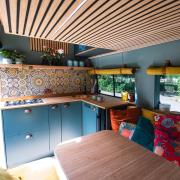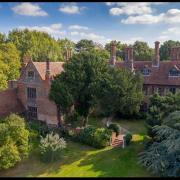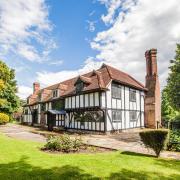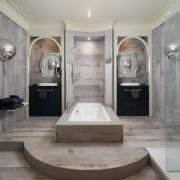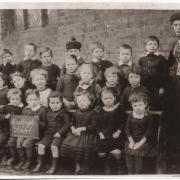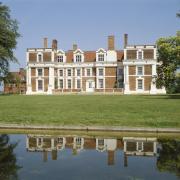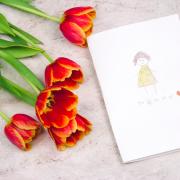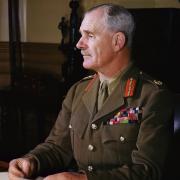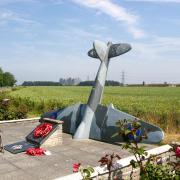Sybilla Hart travels back in time to discover the secrets behind two fascinating properties

The Old House
The Old House located on South Street in Rochford is one of the oldest houses in England and provides a fascinating insight into the development of house building in the medieval era. Built in 1270, it is the oldest non-secular building in the town. The main hall of the house is the longest surviving aspect, and this is where it all started.
The original hall was constructed in a timber frame with wattle and daub panels. Today, this style is known to many of us; it’s highly romantic and reminiscent of a bygone era, but back in the 13th century this would have been considered the height of sophistication in terms of construction. These panels were made from local raw materials gathered from the nearby River Roach, including mud, dung, reeds and rushes. It would have been plastered with goat hair and lime and the wood supplied from neighbouring Hockley Woods.
The entire family would have crammed into this single-hall room at The Old House – servants, animals and all – and this would have been considered serious luxury. It was only over time that the house was expanded; it wasn’t always as large and roomy as it is today.

When The Old House was first built there was no chimney, this came much later. Originally, a fire was burnt in the middle of the room – imagine how dangerous this would have been! The fire was used for the necessities that were cooking, heating and lighting.
In 1290, The Old House received its first extension. The north side of the hall came first and a century later, a south wing. These wings provided a master bedroom and a buttery. Building additions represented an increase in social standing, but none so impressive as the chimney that was added in the mid-16th century. A chimney stack replaced the medieval-style fire in the centre of the hall, and the one at The Old House (according to Rochford Council) ‘demonstrates a very high standing … at this time chimney stacks were a mark of status.’
In the 18th century, upper floors were built onto the house to afford a designated servants’ quarter in the south wing – a very sure sign that you were going up in the world, quite literally!

The Old House is today owned by Rochford Council and has been since 1982, but prior to this it was owned by a series of individuals, from chandlers to ministers. The Shaa family are thought to have lived at The Old House in the 15th century, but unfortunately no one knows who commissioned the early build of the hall house.
John Shaa’s son went on to be Mayor of London and was amongst those who welcomed Catherine of Aragon to England. Prior to his appointment as mayor, Shaa was a goldsmith and made jewellery for royalty, most notably Henry VII. The court poet William Dunbar sang Shaa’s praises in a poem, speaking of his princely governance and most worthy office as mayor. Fine praise indeed!
The subsequent residents of The Old House, though not diplomats, were local tradesmen such as chandlers, shoemakers, a solicitor, a retired minister and two pub landlords. When Rochford district council finally bought it for good in 1982, there was a cauldron of lime wash left outside for lime-washing purposes; one could say that the restoration of The Old House was both painstaking and original. It now serves as a romantic wedding venue.

Rochford Hall
Another historical house in the vicinity is Rochford Hall, where Henry VIII is rumoured to have first clapped eyes on a young Anne Boleyn. The Boleyn family owned the house in 1515, and it is said to have provided the setting for secret meetings between the king and his second wife. Unfortunately, as history tells us, this was not to be a union that lasted.
Henry VIII and Anne Boleyn were formally married on 25 January 1533, and Anne gave birth to a daughter, the future Queen Elizabeth I, in September that year. They were married in secret on 14 November 1532, which accounts for the birthday of their first child the following September.
Anne Boleyn went on to have a son who was very sadly stillborn, and possibly due to her stance on monasteries (she advocated the redistribution of their resources) and poor relations with Oliver Cromwell, Anne Boleyn was accused of being an adulterer, being in an incestuous relationship with her brother and of treason.
Anne Boleyn was sentenced to death by beheading in the Tower of London in May 1536, only three years after her marriage to King Henry VIII. For the most part, Anne Boleyn is not considered by most historians to have been guilty of these crimes, more that the King was keen to remove Boleyn in order to move on to his next Queen, his third wife, Jane Seymour.
Rochford Hall was given to Mary, Anne Boleyn’s sister, and her second husband, William Stafford, in 1534 by their father Sir Thomas Boleyn. Stafford was not rich, but he was from a respectable family. Mary was previously the mistress of King Henry VIII, making it quite the family affair! The sisters' involvement with the king did not overlap; Mary’s affair with Henry ended a year before Anne’s courtship with him.
In 1550, the Rochford estate was sold to the canny Sir Richard Rich. By the late-17th century, Rochford Hall was in the hands of the Child family, later known as the Tylney family, who owned Wanstead House, also in Essex. Rochford Hall passed into the Wanstead Estate and was inherited by James Tylney-Long and finally by Henry Wellesley, 1st Earl Cowley.
Earl Cowley was Ambassador to France and sold Rochford Hall to a gentleman farmer in 1867. Rochford Hall was then let typically on long leases. Today, this historic building is used as a golf and country club.






